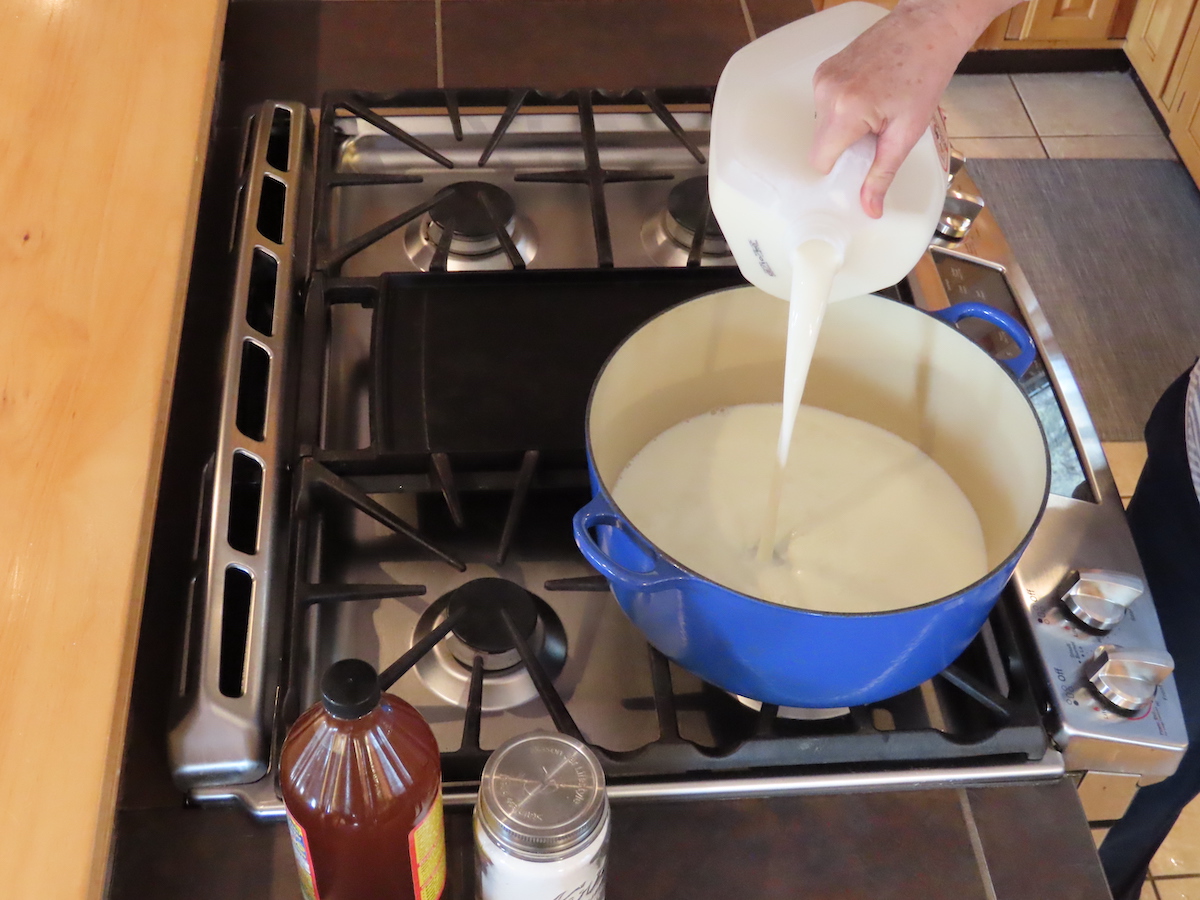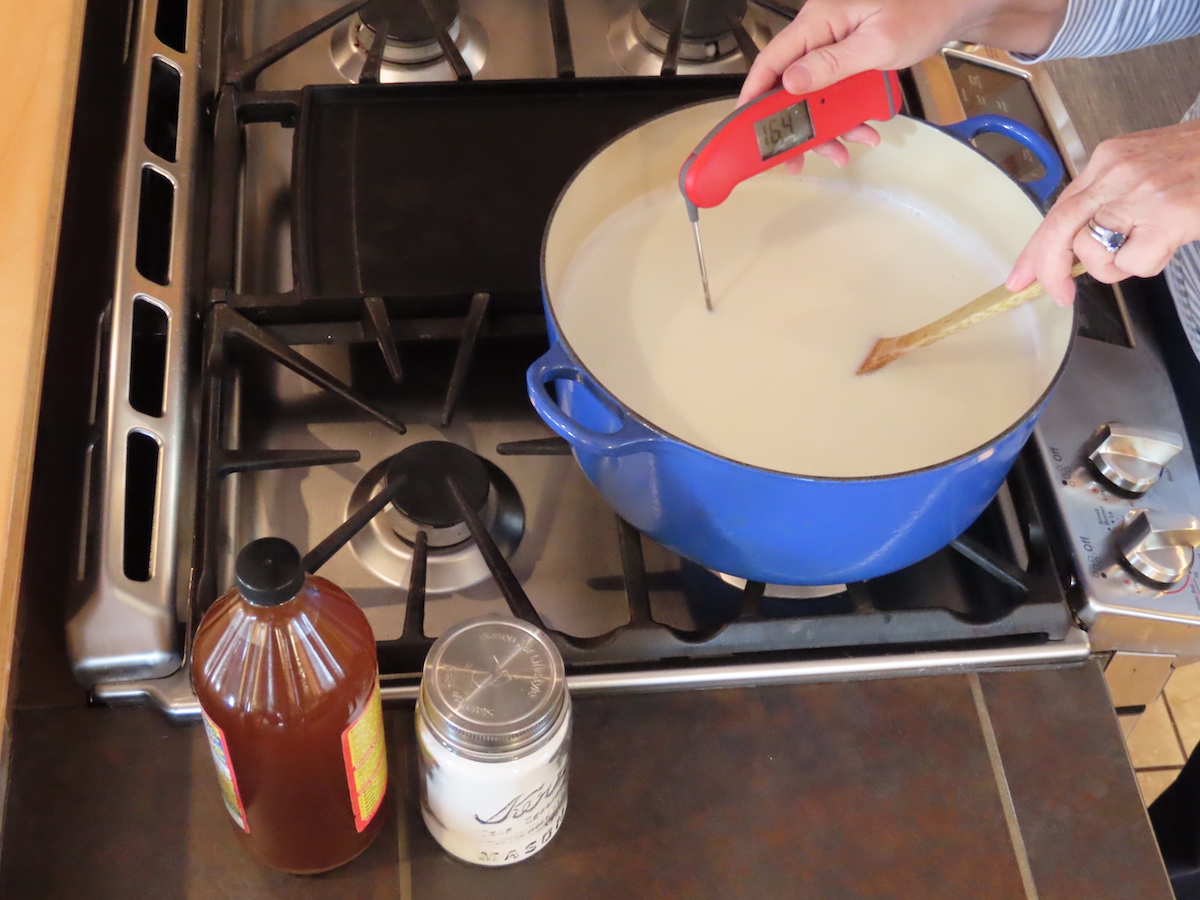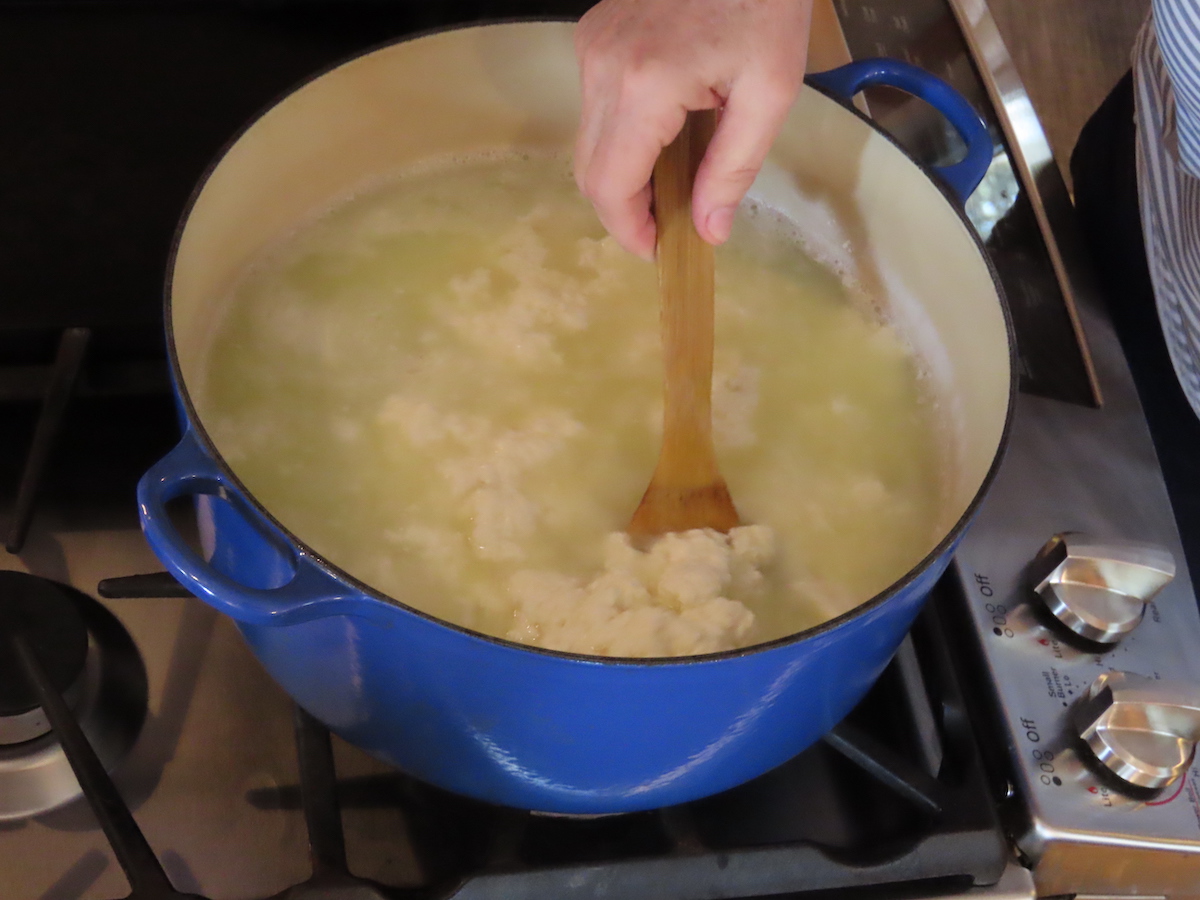Farmer’s Cheese is quick and easy to make at home! This 3-ingredient recipe takes only 20 minutes of hands-on time. No prior experience is required—and once you know how to make it, we bet you’ll make it often. See step-by-step recipe with photos.
What Is Farmer’s Cheese?
“Farmer’s Cheese” is a classic from the pioneer days, when homesteaders made most cheese from their own cows for family meals. However, it is unknown whether it was invented by the ancestors of European immigrants to America.
This style of cheese has a long history throughout Europe, northern Asia, and Russia. Spanish settlers likely introduced it to Mexico, where it’s known as queso fresco. The same technique is used to make paneer throughout India and in nearby countries. Ricotta, traditionally made with just the whey from sheep’s milk, today is often made from whole milk to resemble a lightly drained farmer’s cheese. See a Ricotta Cheese recipe.
Popular worldwide, farmer’s cheese can be made quickly with readily available ingredients and tools. The fresh, unaged cheese relies on acid and high heat to separate the curds from the whey so that they can be drained or pressed until they form cheese.
Before You Begin
Farmer’s cheese ingredients are easy to find, but some work better than others.
Avoid ultrapasteurized milk when making any type of cheese; the ultrahigh heat used to kill harmful bacteria and extend shelf life also prevents cheese curds from bonding. Pasteurized, non-homogenized whole milk makes the best farmer’s cheese, but homogenized milk will work, too. Cow’s milk can be replaced by sheep’s or goat’s milk, but the flavor and texture will differ slightly.
Vinegar is the traditional acidic ingredient in farmer’s cheese that helps to separate the curds and whey. American pioneers likely used apple cider vinegar, which gives a hint of apple-flavored sweetness to the cheese. In southern climes, lemon juice may have been the top choice. Today, some people prefer distilled white vinegar because of its neutral flavor, or you can make a more flavorful choice for specific uses, like lime juice for cheese to sprinkle on fish tacos or orange juice for a blintz filling. The pH of each acid varies slightly, so you may need to add an extra tablespoon or two to encourage curds to form. You can also mix fresh herbs, citrus zest, spices, and other flavors into the finished cheese.
Our Basic Cheesemaking Guide explains more about the general process of making cheese at home and the best ingredients and tools.
Farmer’s Cheese Recipe
This simple cheese recipe takes about 20 minutes of hands-on time and is ready in about an hour to eat. In many cultures, Farmer’s Cheese is always in the fridge, ready to enjoy with breakfast or as a snack.























